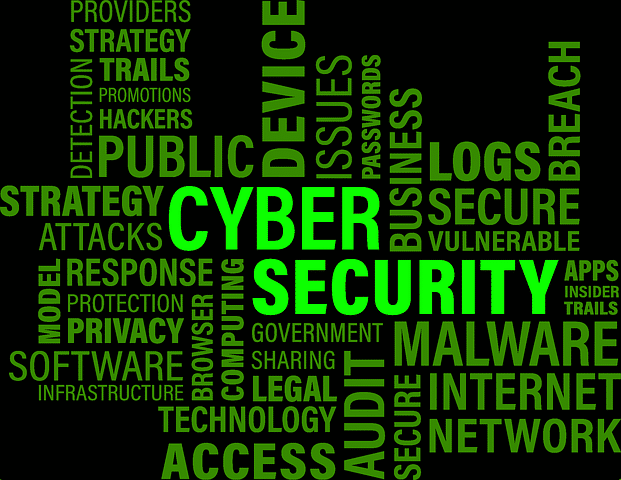A vulnerability is the possibility of an action or event that could result in a compromise of the system, service or product. The main objective of vulnerability identification is to find vulnerabilities that exist in the system, service or product and determine whether any of these vulnerabilities pose a risk to the system.

Vulnerabilities can be identified by performing a number of activities and techniques, including:
• Identifying threats to the system.
• Analyzing assets and their relevancy.
• Performing discovery scans on different IT systems.
• Identifying vulnerable services and applications.
• Performing manual checks on system elements that are not covered by automated tools.
In order to identify the potential security vulnerabilities with your website and to make it more secure, you need to conduct web application penetration testing. Basically, web application penetration testing is defined as a security process in which a web application is tested for existing or potential vulnerabilities that can be exploited by attackers.
Web application penetration testing generally includes the following steps:
1) Identification of the target
2) Reconnaissance
3) Scanning and enumeration
4) Vulnerability analysis
5) Exploitation
6) Post-exploitation
7) Reporting
How to prevent security breaches.
To prevent security breaches, it’s crucial that you identify potential vulnerabilities in your systems and take steps to fix them before they can be exploited.
Preventing security breaches starts with identifying how someone could potentially gain unauthorized access to your systems. For example:
You may have an older version of a software program that no longer receives updates and patches, making it more vulnerable to cyberattacks.
A vulnerable website plugin could allow hackers access to the backend of your website and give them the ability to plant malicious code or steal sensitive information.
The first step in a successful cybersecurity strategy is to identify your organization’s potential vulnerabilities and take steps to prevent security breaches. A penetration test, also known as pen testing, provides a comprehensive evaluation of an organization’s cybersecurity posture through the use of simulated cyberattacks.
The first step in any cybersecurity audit involves looking at the systems currently in place, and determining whether or not there are any areas of vulnerability.
Many companies struggle with the problem of having one or more areas that are susceptible to a cyber attack. It is important to identify these potential vulnerabilities and take steps to prevent security breaches. Organizations can protect themselves by ensuring that they have the right technology in place to detect potential problems and that they have a plan for what to do if an attack occurs.
Next comes the task of educating employees about how they can help protect their company’s sensitive data. Many people are unaware of how often hackers target companies. Employees should be trained on how to identify potential vulnerabilities and take steps to prevent security breaches.
Finally, businesses need to develop plans for what happens when an attack does occur. The best thing they can do is minimize damage by preventing further access from unauthorized personnel – including themselves! It is important that employees are trained on proper procedures so as not to compromise other people’s information as well.

Getting to know your network
To get started, you need to understand the network you’re trying to protect. Start with an inventory of devices on your network. How many computers and mobile devices are connected? What kind of software is installed on them? Which devices are connected to the cloud? What type of security do they have?
The more information you can gather about your network and its devices, the better. This allows you to identify potential vulnerabilities and take steps to prevent security breaches.
Protecting your data
Whether it’s customer data or intellectual property, every business has important information that must be protected. To prevent data from getting into the wrong hands, experts recommend using protocols like Secure Sockets Layer (SSL) and Transport Layer Security (TLS). These protocols encrypt data before it is transmitted across a network.
Antivirus software or software firewalls can also help protect sensitive data. Watching out for viruses or malware like spyware also helps prevent cyber attacks.
Cybercriminals are relentless in their pursuit of the sensitive data your business holds. To make matters worse, they’re constantly evolving their attack vectors, creating unique threats and vulnerabilities.
Types of cyberattacks
The most common type of malware is a computer virus. A virus attaches itself to a program or file so it can spread from one computer to another, leaving infections as it travels. Viruses can range from causing mildly annoying effects to damaging data or software and causing denial-of-service (DoS) conditions.
Worms are similar to viruses in that they replicate functional copies of themselves and can cause the same damage. In addition, worms do not need to attach themselves to an existing program. One of the worst worms ever created was the Code Red worm, which was responsible for causing billions of dollars in damage by sending random traffic to overpopulate websites on the Internet.
Trojan horses are misleading software that claims to perform one function but instead performs malicious actions on a computer system. The Trojan horse gets its name from the “Trojan Horse” used during the Trojan War; soldiers hid inside a large wooden horse that was presented as a gift, then snuck out in the middle of the night while their enemies slept, ultimately winning the war.
Spyware is any technology that aids in gathering information about a person or organization without their knowledge. Spyware can get access to personal information such as internet surfing behavior, passwords, account details, and credit card numbers.

Here are steps you can take to protect your company’s data from cyberattacks:
Use a secure router — Configure your router’s firewall so it blocks all traffic except the ports and protocols you need to access the Internet. Make sure you’ve changed the default password on your router’s administrative interface.
Update software — Ensure all software is up-to-date with the latest security patches. This includes browsers, email clients, PDF readers, and other applications that use the Internet.
The following are examples of possible solutions to some of the most common cybersecurity challenges facing many companies today:
How do we identify potential vulnerabilities that could lead to a breach?
Conduct regular risk assessments across all departments, systems, and devices to identify these vulnerabilities and then develop plans for addressing them.
What is the best way to protect our equipment from malware?
Cybersecurity is the protection of computer systems from theft or damage to their hardware, software, or information, as well as from disruption or misdirection of the services they provide. There are multiple types of cybersecurity threats.
One important way to protect your equipment from malware is to use antivirus software. Antivirus software scans your computer for malware that may be present on your system and in new files you download from the internet. It then removes any malicious code it finds and blocks harmful sites and links.
Another way to protect your equipment is to use firewalls. Firewalls are software programs that monitor traffic between your computer and the Internet. They block hackers and prevent unauthorized access to your data by controlling which online traffic can enter or exit a network.
There are also best practices in the workplace, such as creating strong passwords that include upper-case letters, lower-case letters, numbers, and symbols, changing passwords often, and not sharing them with others. Additionally, keeping your software up-to-date ensures that you have the most current security features available to protect against cyberattacks.
Another best way to protect data is to back it up regularly. Have a system in place so that if your primary storage fails, you have a second copy of your data safely stored somewhere else, such as on a removable disk or on a remote server.
A proper backup strategy will help you retrieve your data quickly in the event of an attack or equipment failure. In addition, if you are infected by ransomware, you can restore from a backup instead of paying the ransom.
Your company’s Intellectual property and your client’s sensitive information are valuable assets. Protecting them from cyber-attacks is essential.
